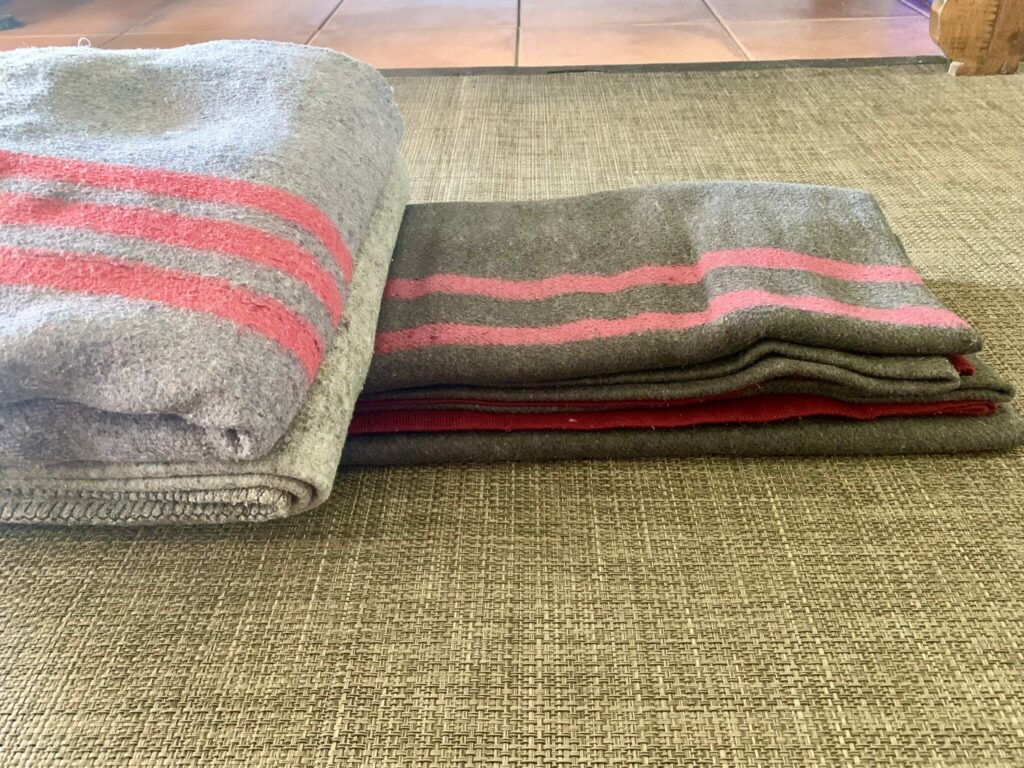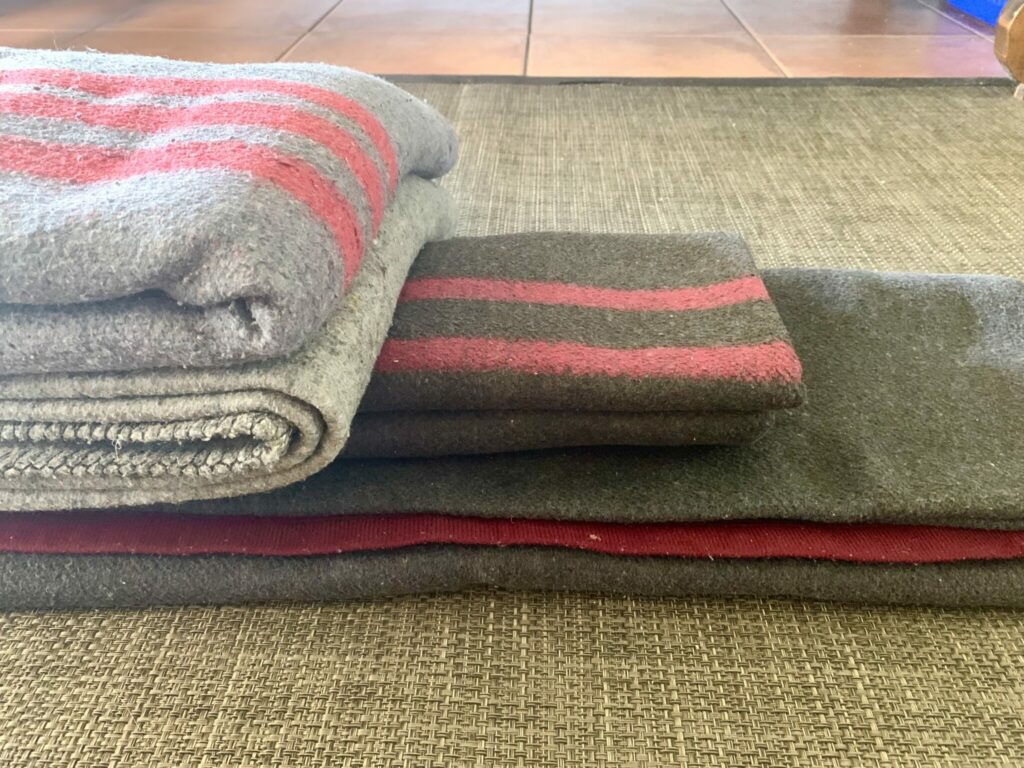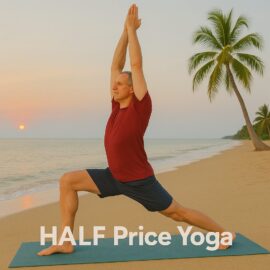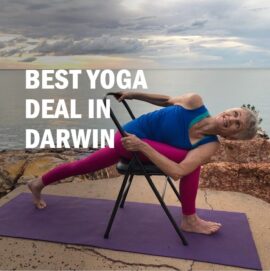Ujjayi Pranayama Iyengar Style
Ujjayi Pranayama Steps And Benefits
How to do Ujjayi Pranayama Iyengar style.
Ujjayi Pranayama Iyengar style dramatically increases what you get from yoga. Here’s the Ujjayi Pranayama steps, as well as the health benefits of Ujjayi Pranayama. Save it so you’ve always got the Ujjayi Pranayama steps and benefits.
In summary, focus on slowly breathing in & out, & also on the very quiet “whistle”, or hiss, of the breath as you breathe.
It works because it brings more calming brain waves to be more dominant in your mind.
Below, see more on how to do this Ujjayi Pranayama Iyengar style.
Or see our post and slide presentation outlining more about the brain waves activated by meditation, and their benefits.
Or follow the orange links for our short, introductory course on Ujjayi, with 10 FREE classes included.
Also known as Ocean Breath or Breath of the Victorious
Ujjayi Pranayama Iyengar style dramatically increases what you get from yoga. Here’s the Ujjayi Pranayama steps, as well as the health benefits of Ujjayi Pranayama. Save it so you’ve always got the Ujjayi Pranayama steps and benefits.
Ujjayi Pranayama Iyengar style aims to control and still the fluctuations in the mind. Prana means life energy. Yama means control.
The practice of pranayama seeks to bring the mind into the present moment. The practices help to stop us worrying about the future or staying stuck in the past.
In Ujjayi pranayama great mental concentration is required to fill the lungs evenly on the inhalation and slowly release the breath on the exhalation.
The lungs are fully expanded, and the chest thrust out like a conqueror. Hence the name “breath of the Victorious”.
During the inhalation and exhalation, a sound is heard in the upper throat. It is reminiscent of the sound of ocean waves rolling in.
Hence the name ocean breath.
Below, there’s details on how to practise this type of pranayama.
Breath Meditation Video Course, & 10 FREE classes.
Breath meditation 10 pack, online or in-studio.
HALF price non-beginner 10 pass. For newcomers, or via refer-a-friend (10 X $9.75 a class)
Ujjayi pranayama Iyengar style is powerful
It is transformative for the body, mind and spirit. It is both invigorating and calming.
The breath is brought from the abdomen (solar plexus area) up the spinal column. It fills the lungs and at the same time alters brain waves.
The whole process transforms energy. This alters the mind and serves to connect the individual with the universal human community.
Mindfulness on lengthening of the breath.
The practitioner learns to regulate the length of both inhalation and exhalation.
Firstly you learn to increase both inhalations and exhalations. Then over time, you learn to even out the length of both breaths.
A chin lock is applied. It narrows the passage of air at the base of the throat.
Mindfulness on the sound that is emitted during the practice.
The mind becomes steadied, calm and single pointed. This is done by listening to the sound of the breath.
During the inhalation a sibilant sound sss is emitted.
During the exhalation an aspirate sound “hhhh” is emitted (or hiss). See more below on this.
The practice soothes and tones the nervous system as well as strengthens the lungs.
Beginner blanket set up, for extra comfort for your back

A more comfortable blanket support for beginners, including two blankets or beach towels for the head. Notice that both of the underlying blankets are directly on top of each other (different from below). The blankets for the head are about two of your hand spans (finger to thumb) distance from the front edge of the blankets. If all this sounds a little pedantic, then just remember that getting the right set up is one of the key Ujjayi Pranayama steps and benefits.
Ujjayi is the first pranayama taught
Start by lying down over supports, such as blankets, thick towels, or a special pranayama pillow. (See the above picture).
Ujjayi is the principal pranayama taught to those starting out.
If you belong to the Iyengar yoga style, you learn it lying down over blankets or a bolster and blanket.
You learn to follow the following preparatory steps before attempting full ujjayi.
When the lungs and spine become stronger you can progress to practising in a seated position.
It is best to proceed slowly and listen to the sound being emitted. Imagine you are sipping the breath in through a straw.
Go slowly towards the health benefits of Ujjayi Pranayama
Overdoing, and rushing will block the straw, harden the sound, and irritate the nervous system.
Wait for the breath to come; and to lengthen.
Watch moment to moment. Above all, each time you practice, accept where you are at.
Try to expand horizontally the bottom ribcage bit by bit, before trying to vertically fill the lungs.
Steadily, you will find you start to notice the numerous health benefits of Ujjayi Pranayama.
Each time you practise pranayam, it will be different
Remember the breath is greatly affected by your mental emotional state.
Each day you come to practice will be a new and different encounter with your breath.
Your breath is your friend, don’t fight with it. It is there for you in the good and tough times.
Standard blanket set up, with extra head height
Breath Meditation Video Course, & 10 FREE classes.
Breath meditation 10 pack, online or in-studio.

This is a more standard set up for doing any kind of pranayama breath meditation. But it includes two blankets or thick beach towels for the head. This often helps make Ujjayi pranayama work better for you. The second lowest blanket is one hand span (little finger to thumb) from the front end of the lower blanket. The third and fourth blankets are then about another hand span from the front of the second lowest blanket. The right blanket set up is one of the key Ujjayi Pranayama steps.
Ujjayi ONE is your first of the Ujjayi Pranayama steps
Start lying in supported Savasana. (See above for examples of a blanket set up).
Then, see that you are lying evenly over the supports. A folded blanket should support the neck and head. Plus, there should be a slight slope from the forehead to the chin, with a mild chin lock.
Take your time to draw the outer shoulder blades in and inner shoulder blades inwards. This will help open the chest from the back of the breastbone to the front.
See that the collar bones are opened, shoulders tucked lightly under. Draw in all skin and muscles down from the back of the neck through to the buttocks. Relax the body.
A bolster can be used under the knees to release the lower back.
Withdraw the senses inward. Breath in and out, observing the breath, and listening to the very quiet “whistle”, or hiss, of the breath as you breathe.
If you have trouble hearing this sound, then try having an extra blanket under your head. It is important that your neck or throat is very slightly tucked (rather than being extended backwards).
Do even expansion on the inhalation, and even contraction on the exhalation.
Here you learn to focus the mind on the breath as well as prepare the lungs for deep breathing. Continue for 10 mins.
Rest in Savasana (or relaxation pose).
Breath Meditation Video Course, & 10 FREE classes.
Breath meditation 10 pack, online or in-studio.
All Flametree price & packages, including ten passes
Ujjayi TWO
Learn to lengthen the exhalation. Use slow steady exhalation, and normal inhalation.
Mr BKS Iyengar in Light on Pranayama, explains that this practice soothes the nerves and calms the brain.
Plus it is very helpful for those suffering from hypertension.
Continue for 10 mins.
Then rest in Savasana (relaxing pose).
Ujjayi THREE
Learn to lengthen the inhalation without inflating the abdomen. Use a slightly longer exhalation than normal. Listen to the sound on the inhalation.
Mr BKS Iyengar explains that this practice is good for those suffering from low blood pressure, asthma, depression.
It invigorates the nervous system and brings confidence.
Continue for 10 mins.
Rest in Savasana.
Ujjayi FOUR, and beyond
Learn to combine both longer inhalation and longer exhalations.
Start the practice with an exhalation, and finish with an inhalation. When you are first learning ujjayi pranayama you can place your hands on the side of the bottom of the ribcage with fingers pointing towards one another.
First learn to open horizontally the bottom of the rib cage. Open the front, side and back of the bottom of your chest.
Take your time. Don’t be in a rush to move your breath vertically up towards the middle chest area.
Watch for tension that may develop in the shoulders neck, face, throat lower back. Use your normal inhalations and exhalation between each ujjayi pranayama breath to relax completely.
At the end of each longer inhalation, grip the diaphragm, release a little around the abdomen, and have a slow, long controlled exhalation.
In between each longer inhalation and longer exhalation, take normal soft smooth inhalations and exhalations to recover completely. This stage gives energy, soothes, and tones the nerves. It also quietens the mind. Continue for 10 minutes.
As always, rest in Savasana.
Seated Ujjayi Pranayama Iyengar style
Seated ujjayi follows the same steps as above.
At first one can learn it sitting on a chair. Then as the spine becomes stronger, it can be practised sitting on supports in a simple cross leg position.
There are numerous sitting positions.
For a more detailed explanation of ujjayi pranayama, refer to B.K.S. Iyengar “Light on Pranayama”.
Beginner deals to get to Ujjayi Pranayama steps and benefits
Try beginner level yoga classes with 2 weeks free to start, and you can start immediately.
As soon as you’ve done at least several weeks of beginner yoga, you can try our weekly pranayama classes. As a result, you can start the journey to get the health benefits of Ujjayi Pranayama.
Or you can get started with our introductory pranayama meditation course including ujjayi.
The reason for doing some yoga first, is that beginner yoga will strengthen your lungs, and calm your nervous system.
Flametree offer all of it classes both online, and in many locations in Darwin.
The beginner poses are easy, introductory poses. There are even special, optional beginner classes like Gentle Yoga, Backcare Yoga, and Easy Restorative (or Relaxation) Yoga. You can see them all in the beginner timetable.
One of the key reasons that yoga is so successful with treating pain, including back, neck and shoulder pain, is the often overlooked role of fascia tissue in your body.
Of course, if you need more than what I said in the journey I’ve talked about above, then there’s also these numerous benefits of yoga.
Non-beginner deal for Ujjayi Pranayama Iyengar style, plus yoga
Non-beginner yoga students, who are newcomers or lapsed at Flametree, get 30 days of unlimited non-beginner classes for $79 (online or in-studio, or both).
There are also 4 non-beginner 10 pack passes, with options for online and concession holders. These passes give you plenty of flexibility about attendance. Find them under the PASSES tab, or on our list of passes.
All of the non-beginner passes include Flametree’s twice weekly breath meditation classes, including ujjayi pranayama Iyengar style.
These low cost classes can also be used to start your Ujjayi Pranayama steps and benefits journey.
The non-beginner timetable has a range of convenient class times. On the timetable page, look underneath the timetable grid, so as to see classes in your own time zone.
You’ll find four different levels of non-beginner classes, including intermediate, and experienced levels, and breath meditation options.
If these deals are not exactly what suits you, check out all Flametree Yoga packages.
In other posts, you can also see more on the health benefits of Ujjayi Pranayama.
Meditation is also taught from the very basics at our periodic Bali Yoga Retreats.





I am so grateful, and relieved, to be with you again for this wonderful Pranayama class. Just this start with you today has given me relief from stiffness and aches, a sort of coming home to knowing where I can be. Today’s session after the Pranayama too, was ideal, aligning my movement with breath. It is extraordinary how effective and enormously helpful quiet measured breathing can be. Thank you for so generously providing a beautiful Good Friday morning Chris.
Hi Lynden. Thanks very much for your comment. Wonderful to have you participating.